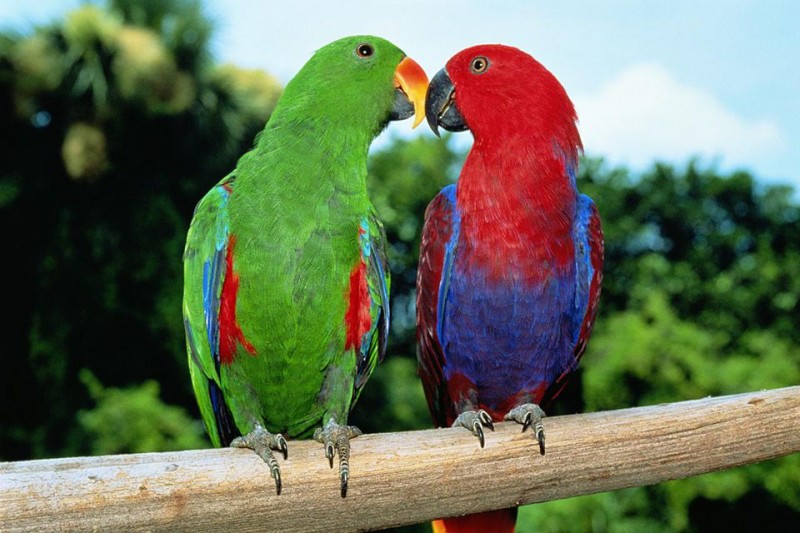
Teaching tricks to your pet parrot can be an exciting and rewarding experience for both you and your feathered companion. Parrots are highly intelligent and social birds, capable of learning various tricks and commands with proper training techniques. In this article, we will explore the step-by-step process of teaching tricks to your beloved parrot.
Understanding Your Pet Parrot
2.1. Learning Abilities of Parrots
Before diving into training, it's crucial to understand the learning abilities of parrots. These intelligent birds can grasp new concepts quickly and are excellent at imitating sounds and behaviors. This makes them perfect candidates for learning tricks and commands.
2.2. Bonding with Your Parrot
Establishing a strong bond with your parrot is essential for effective training. Spend quality time with your pet, talk to them in a soothing tone, and offer treats as a sign of affection. A bonded parrot is more likely to trust you and eagerly participate in training sessions.
Positive Reinforcement Training for Parrots
3.1. Importance of Positive Reinforcement
Positive reinforcement is a highly effective training method for parrots. It involves rewarding desired behaviors with treats, praise, or affection. Avoid punishment-based training, as it can lead to fear and distrust in your parrot.
3.2. Basic Training Commands
Start with basic commands such as "step up," "step down," and "stay." Use treats as rewards when your parrot successfully follows the command. Consistency and patience are key to successful positive reinforcement training.
Clicker Training for Parrots
4.1. The Clicker Training Process
Clicker training involves using a clicker to mark desired behaviors, followed by a treat as a reward. The clicker serves as a clear signal to your parrot that it has performed the desired action.
4.2. Teaching Tricks Using Clicker Training
With clicker training, you can teach your parrot a wide range of tricks, from simple tricks like "wave" and "spin" to more complex tricks like "fetch" and "basketball." Break down each trick into smaller steps and reward your parrot for making progress.
Target Training for Parrots
5.1. Using a Target Stick
Target training involves using a target stick, usually a wooden dowel or a similar object, to guide your parrot to perform specific actions. The target stick serves as a visual cue for your parrot to follow.
5.2. Teaching Tricks with Target Training
Target training can be used to teach tricks like "turn around," "play dead," and "fly to a specific spot." Gradually move the target stick to lead your parrot through the desired actions, and reward them for successful attempts.
Socializing Your Parrot
6.1. Interaction with Humans and Other Animals
Socialization is vital for a well-adjusted and happy parrot. Expose your parrot to different people and friendly pets to build their social skills and confidence.
6.2. Socialization Activities for Parrots
Engage your parrot in interactive play sessions, introduce them to new environments, and encourage positive interactions with both humans and animals.
Problem-Solving Tips
7.1. Addressing Behavioral Issues
During training, you may encounter behavioral challenges. Be patient and identify the root cause of any problems. Seek advice from a certified avian behaviorist if needed.
7.2. Overcoming Challenges in Training
If your parrot seems disinterested or unresponsive, take a break and try again later. Avoid forcing your parrot to perform tricks, as it may lead to aversion.
Enrichment and Playtime
8.1. Importance of Enrichment
Enrichment activities are essential for keeping your parrot mentally stimulated and happy. Provide toys, puzzles, and foraging opportunities to prevent boredom.
8.2. Fun Tricks and Games for Your Parrot
Engage your parrot in fun activities like solving puzzles, playing with interactive toys, and participating in trick-based games to strengthen your bond and keep them entertained.
Health and Safety Concerns
9.1. Keeping Your Parrot Safe
Ensure your home is safe for your parrot by removing toxic plants and securing potential hazards. Provide a spacious and comfortable living area with appropriate perches and toys.
9.2. Signs of a Healthy Parrot
Monitor your parrot's health regularly and look for signs of illness, such as changes in appetite, behavior, or feather appearance. Schedule regular check-ups with an avian veterinarian.
Teaching tricks to your pet parrot is an enjoyable and fulfilling experience that deepens your bond and enhances your parrot's cognitive abilities. Embrace positive reinforcement training, target training, and clicker training to unlock your parrot's potential. With patience, love, and consistency, your feathered friend will impress you with its new repertoire of tricks.
6 Practical Steps to Achieve Emotional Maturity
Nurturing Love: Tips to Overcome Jealousy and Insecurity in a Relationship